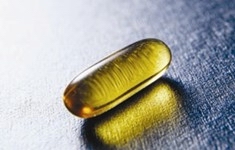 The decision by EU fisheries ministers to start phasing out the practice of discards has been welcomed by the fishmeal and fish oil industry.
The decision by EU fisheries ministers to start phasing out the practice of discards has been welcomed by the fishmeal and fish oil industry.“The supply of fishmeal and fish oil is not meeting current demand and raw material that could be used to supply these needs is being dumped at sea,” said Andrew Mallison, director general of IFFO The Marine Ingredients Organization (formerly the International Fishmeal and Fish Oil Organization).
Mallison is at pains to point out that discards should not be caught in the first place and go for direct human consumption wherever possible, but if not, for example because the fish are too small or there is not a market for them, they should be used to produce fishmeal and fish oil.
“Demand for fishmeal is greatly increasing,” he said. “Mostly for fish feed for the burgeoning aquaculture industry, but also for animal feed. The production of pigs in China, for example, is rocketing.
“Fish oil, with its high long chain omega-3 fatty acid content, is increasingly being used as health supplements.”
Approximately 4.5 million metric tons (MT) of fishmeal are produced each year, together with 1 million MT of fish oil, but this is not keeping pace with demand. As a result, feed formulators are reducing the fishmeal content and replacing it with what Mallison says are less digestible and less healthy ingredients.
“There will be less omega-3 fatty acids present and more omega-6 fatty acids, and this at a time when retailers are pushing the high omega-3 message.”
With more whole fish now going for direct human consumption, so called byproducts such as filleting waste — heads, tails, bones, skin etc — are increasingly being used to produce fishmeal and fish oil.
“There is also an environmental imperative to process by-products rather than dumping them. We and our members are actively working to increase the amount of byproducts recovered for fishmeal and fish oil production,” said Mallison.
IFFO estimates that more than 30 percent of the world’s fishmeal now comes from by-products, but this has only replaced the reduction in supply from whole fish and that total supply is capped at around 4.5 million MT. A recent FAO/OECD report predicted that by 2021, 43 percent of global fishmeal production should come from by-products.
Fishmeal is made primarily from whole fish, usually small bony species such as anchovy from Peru, which at present do not have a market for human consumption. “The Peruvian anchovy fishery produces five million MT a year,” said Mallison. “It is the largest fishery in the world.”
Byproducts are the next largest source of raw material and there is a substantial volume of filleting waste from onshore processing which could be used to provide fishmeal and fish oil. But again there could be logistical problems in getting it to a fishmeal plant.
“Storage and transport systems must be in place,” said Mallison. “In the past it has often been uneconomic to transport raw materials long distances but, as prices being paid for fishmeal and fish oil have risen, new possibilities may be available.”
Now that the discard controversy seems to be reaching a satisfactory conclusion, it will be interesting to see what will actually happen to the fish that should now be brought ashore. If it does not go to direct human consumption, which is recognized as the best solution, then using it to feed fish or animals that are then fed to people is a very acceptable second choice.
“The challenge now for the EU is to provide technical help to solve problems with transport and storage,” said Morrison.
IFFO The Marine Ingredients Organization members account for 60 percent of the world’s production of fishmeal and fish oil, and 80 percent of the trade. It now has a wide range of members including retailers and producers of omega-3 oil from krill and algae, hence the change in name.





